They called it white coal — the foaming, churning masses of water that tumbled down the side of Norwegian mountains through turbines to create electricity. But when Norway entered the 20th century as a young nation, hydropower was more than coal — it was gold. And researchers from the then Norwegian Institute of Technology (NTH) — now a part of NTNU — were instrumental in pioneering technologies that helped build modern Norway.
Much of that research took place in the Waterpower Laboratory, an elegant four-story building on NTNU’s Gløshaugen campus in Trondheim, which in 2017 has been celebrating its 100th anniversary.
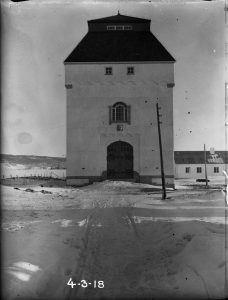
The oversized pipes used to test turbines and do research were the backdrop to a series of dramatic stories, peopled by individuals who helped electrify Oslo and the rest of the country, aid the Resistance during WWII and help countries like Nepal overcome tremendous barriers in the use of their hydropower resources.
And these stories are still being written, as the Waterpower Laboratory enters its second century. In 2016, the Research Council of Norway created HydroCen, the Norwegian Centre for Hydropower Technology, a Centre for Environment-friendly Research that will operate until 2024. Here, among other projects, researchers are learning to turn the forces of hydropower to a new, important goal: providing energy in a world that is trying to cut its carbon emissions.
Building the future with a hydropower triangle
In the late 1800s and early 1900s, electricity was seen as the key to bringing Norway into the modern world. This was much more than a matter of just replacing kerosene lanterns with electric lights.
The abundance of falling water in Norway offered the young country a way to use hydropower for industrial development. One of the earliest examples of this was Norsk Hydro, founded in 1905 by Sam Eyde and physicist Kristian Birkeland. They developed a way to use electricity — generated by hydropower— to capture nitrogen from the air to make fertilizer.
When the Norwegian Institute of Technology, NTH, was created in 1910, one of its primary goals was to educate the nation’s future scientists and engineers. NTH addressed the issue of Norway’s hydropower development needs with what Norwegian historians and authors Thomas Brandt and Ola Nordal called a three-sided “hydropower triangle”.
One NTH research group focused on building dams and reservoirs, one focused on turbines and related equipment, and one focused on the electricity itself, such as generators and transmission lines. Gudmund Sundby, appointed to NTH in 1911, had responsibility for turbines and related hydropower equipment, but immediately saw the need for a dedicated Waterpower Laboratory where ideas could be tested and refined.
Sundby had a background as an engineer for Kværner Brug, which with Myren Verksted were Norway’s two main turbine producers.
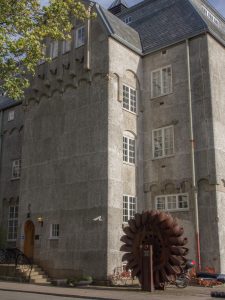
Helping Norwegian industries compete globally
With his industrial perspective, Sundby quickly realized that NTH could offer the two turbine producers help with rigorous testing to improve the efficiency of their turbines. Indirectly, this would also improve the two companies’ competitiveness in the burgeoning international world of turbine production.
First, of course, he needed a laboratory to do the tests. Arne Kjølle, a professor emeritus from the Waterpower Laboratory, said Sundby’s initial proposal to build an expensive hydropower lab was turned down. Kjølle is currently co-writing a history of Kværner Brug, a 150-year-old Norwegian industry that was deeply involved in the nation’s hydropower development.
But Sundby was not one to take no for an answer, Kjølle said.
He argued to the government that Norway had to keep up with the day’s technological development or lose business to the outside world. He also argued that a Waterpower Laboratory could take paid assignments from Myren and Kværner to test turbines.
Under his vision, a hydropower lab would provide engineers a lab for research, a hands-on place to educate students, and a place from companies like Myren and Kværner could test the effectiveness of their turbine designs and improve them.
The first payment of NOK 150 000 came in 1914, with more to follow until the laboratory opened its doors in 1917.
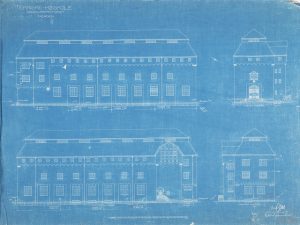
10 per cent gains in efficiency
From the first, the idea behind the laboratory proved an enormous success: between testing and development, Sundby and the Waterpower Laboratory were able to improve the efficiency of the turbines they tested by as much as 10 per cent.
Working with industrial partners, they tweaked the number of blades on the Francis turbine runners and changed the shapes and the angles of the blades to improve efficiency. All of this required the technical knowhow and precision that only the Waterpower Laboratory could provide.
And it was work that paid off almost immediately, when the Norwegian government and the municipality of Oslo decided to build Mørkfoss-Solbergfoss hydropower station in 1916 to supply electricity to the growing city of Oslo, Kjølle said.
Both Kværner and Myren delivered turbines for the station, tailor-made for the run-of-river installation. In the end, the turbines used in the station had an efficiency of 94 per cent — an impressive feat especially because the most efficient turbines today deliver about 96 per cent efficiency, says Ole Gunnar Dahlhaug, a hydropower professor at the Laboratory.
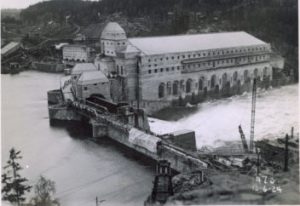
More wealth than a rich gold mine
“When you realize that Mørkfoss-Solbergfoss cost approximately NOK 60 million, you can see that the direct economic benefits of the testing, based on a gain proportional to the increase of the efficiency, were quite considerable,” Kjølle said. “And the Norwegian state, which owned roughly one-third of the installation, got its money’s worth and more for all the capital it invested in the Waterpower Laboratory.”
Georg Brochmann, a journalist of the time, wrote of about the importance of the Waterpower Laboratory in his 1927 book about NTH, “Where Norway’s Future is Being Built.”
“There’s hardly any other academic institution in this country that has provided such rich earnings as this laboratory,” he observed. “Norwegian hydropower is Norway’s biggest asset, and it will mean more wealth for this land if we learn how to exploit it economically than if we had discovered an extremely rich gold mine.”
Tailor-made turbines and the x-blade
One thing about hydropower turbines is that no two are really alike, says Dahlhaug.
“They are all custom-made,” he said. “That is key. You have different flow rates and different heads,” or the height that the water falls down to reach the turbine.
So as Norway built out its hydropower capacity before the Second World War, the Waterpower Laboratory played a role in helping to test these custom-made turbines.
Among the notable NTH graduates of the time was Henrik Christie, who worked out an important description for the calculation and graphical presentation of the water flow across a bucket in a Pelton turbine. This description was later confirmed and provided a substantial basis for the design of Kværner’s Pelton turbines, which had the world’s highest efficiency, head and power output in 1980s.
After graduation, Christie was among the students who helped with tests that made the turbines for the Mørkfoss-Solbergfoss so efficient. In 1924, he went to work for Kværner Brug, where he was able to help the company improve the design of another kind of turbine, called a Francis turbine, so that it could work in places where the head was 500 metres or more.
In fact, as described by a document from the Norwegian Industry Museum, it was Christie’s calculations that allowed his colleagues to come up with designs for Francis turbines that had world-leading efficiencies and flexibility when it came to variations in head. One of these colleagues was Hermod Brekke, who later became a professor at NTH and then head of the Waterpower Laboratory from 1987 to 2002.
This particular design was subsequently used in the Three Gorges Dam in China. The design, which was given the name X-Blade because of how it looked, was patented by Kværner and has been copied throughout the world.
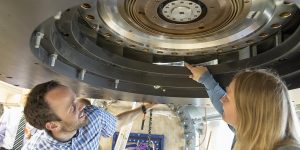
WWII and an escape from the Gestapo
NTH Waterpower Laboratory students didn’t just help make Norway a better place by developing more efficient turbines. They also played a key role during the German occupation of Norway from 1940-1945.
There’s concrete evidence of this in Ole Gunnar Dahlhaug’s office in the Waterpower Laboratory: a small wooden box with a Morse code key that was used during the Second World War. The operator was Knut Alming, a Waterpower Laboratory engineer who eventually led the laboratory starting in 1952 after Sundby stepped down.
During the war, Alming was still a student, and worked secretly in support of the British SIS or Secret Intelligence Service (now called MI6). His efforts sending messages to London did not go unnoticed by the Gestapo, who stormed his flat in October 1942.
While the Gestapo searched his room for compromising materials, Alming sidled over to the door, and then distracted the soldiers by showing them some meaningless letters. He was able to flee, with a few bullets fired in his wake.
Sundby hid his protégé Alming for several weeks until he was able to escape to Sweden and eventually to London. There, Alming worked as an intelligence officer for the Norwegian High Command in exile.
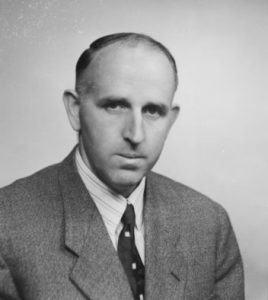
An accuracy of 1/1000 of a degree
When Alming returned to Norway after the war, he worked for three years at Kværner Brug, then returned to his roots at the Waterpower Laboratory in 1952. He headed the laboratory until 1987.
While his predecessor Sundby focused on building the laboratory’s infrastructure and improving turbine efficiency, Alming began working on a related, but equally important question: measuring efficiencies at a hydropower facility.
“When you have a power plant, you have to do efficiency tests,” Dahlhaug explained. “So they measured water temperatures upstream and downstream of the turbines.”
The idea was that blockages or roughness in the pipes or in the turbines, which would reduce efficiencies, would also increase the friction between the water and the equipment. That friction could be measured in the water itself by measuring water temperatures. It was an elegant solution to what was actually a vexing problem. Ironically, however, Alming started studying the problem as a sceptic.
“He actually started the research based on the fact that he didn’t believe in it,” Dahlhaug said. Part of the challenge was finding ways to measure temperatures accurately enough to detect the increases, because they were tiny.
“If you have a 427 metre head and all that frictional energy heats the water, the temperature degree rise is only 1 degree Celsius,” Dahlhaug said. “For most dams, it will be a very small temperature difference indeed.”
To put this into context, the highest dam in Norway is the Virdnejávr Dam in Alta, in northern Norway, which is 145 metres high.
Dahlhaug said Alming’s approach was accurate enough to measure a difference of 1/1000th of a degree, and as such, has stood the test of time.
“We use that exact same measurement and technology for all hydropower plants in Norway today,” he said.
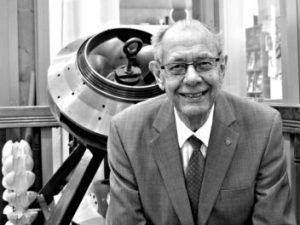
From offshore oil fields to the mountains of Nepal
Alming presided over the Waterpower Laboratory during Norway’s biggest expansion of hydropower development, which peaked by 1979. His successors, Hermod Brekke, and the current leader, Torbjørn Nielsen, faced a different research world.
For example, early hydropower development required the use of oil hydraulic governors to allow the automatic power control of water turbines, work that was pioneered by Waterpower Laboratory founder Sundby.
But after WWII, industry found use for more advanced and different equipment and machinery based on high-pressure oil hydraulics technology. By the 1970s, the technology came into high demand in the offshore oil industry, and the Waterpower Laboratory responded.
In 1984 Arne Kjølle was appointed professor in Oil Hydraulics and Pneumatics at the university, and established laboratory facilities for research on high-pressure fluid power units and signal transfer through hydraulic circuits for remote controllers.
And beginning in the 1990s, the Waterpower Laboratory’s portfolio expanded to working with educating researchers and students in hydropower development, particularly in Nepal and later, Africa.
With its huge, silt-laden flows out of the Himalayan Mountains, Nepal faces tremendous challenges from sheer erosion of turbines, Dahlhaug said.
Close cooperation with Kathmandu University has resulted in the development of the Turbine Testing Laboratory, which is more or less a copy of the Waterpower Laboratory.
Torbjørn Nielsen, head of the Waterpower Laboratory since 2002, worked with his colleague Ole Jørgen Nydal to develop a master’s programme in East Africa. Courses are offered via the University of Dar es Salaam in Tanzania, Makerere University in Kampala, Uganda, and Mekelle University in Ethiopia. Other master’s and PhD candidates have come from Malawi and Mozambique, Nielsen said.
Electric cars, climate change and a growing population
In 2016, the Research Council of Norway funded eight new Centres for Environment-friendly Energy Research, including the Norwegian Research Centre for Hydropower Technology, abbreviated HydroCen.
The goal of the 8-year-long, NOK 400 million effort is to develop hydropower technology for the future and new solutions for using flexible hydropower, says Hege Brende, centre director. The centre, with its headquarters at the Waterpower Laboratory, has five research partners and 35 user partners from leading Norwegian industries.
“Hydropower is a mature technology,” Brende said. “But there are still many challenges — climate change will change water management, intermittent technologies (such as wind and solar) will produce lots of energy that needs balancing and storage, and we have increased electrification, with both population growth and increased electricity demand.”
Norway, for example, has government policies and financial incentives that encourage electric car use. The result is that more than one-third of new car sales in Norway now are for electric or plug-in hybrid vehicles. With just 5 million inhabitants, Norway represents the second-largest electric vehicle market in the world.
Centre director, and Ole Gunnar Dahlhaug, a professor at the Waterpower Laboratory. Photo: HydroCen, NTNU SHOW MORE
“We’re at the forefront of the electrification of the vehicle fleet,” Brende said. “We need a stable and dynamic energy system that can handle that. We see that hydropower, and especially hydropower, has important qualities in this regard.”
The centre is designed to address all of the major issues raised by expanding hydropower development, from the traditional bricks and mortar engineering of siting and building dams and hydropower structures, to questions of new and changing markets and mitigating environmental effects.
“This is an important framework,” Brende said. “It doesn’t help if Ole Gunnar (Dahlhaug) creates the best turbine in the world if it means you have to operate the power station so that it harms the downstream environment or if there is no market for the electricity.”
The view from a 90-year-old crystal ball
When Torbjørn Nielsen took over leadership of the Waterpower Laboratory in 2002, the lab immediately started planning to upgrade the research facilities in the lab. In the end, NOK 20 million was invested in upgrading the research infrastructure, Nielsen said, while maintaining the building’s historic façade.
Nielsen said that one of the lab’s most important recent milestones was the establishment of the Norwegian Hydropower Centre in 2014, which preceded HydroCen.

“This created tighter cooperation between the traditional areas of mechanical engineering, hydraulic engineering, engineering geology and electrical engineering,” he said. “All of these different disciplines have to work together during the construction and operation of hydropower plants. So it was very important that we also worked together in educating NTNU students.”
The lab also continues to work tightly with the problems facing industry today, Nielsen added.
“The electricity market was opened to competition in 1990, and has gradually changed so that there is more and more focus on power production and flexibility, meaning that energy producers have to respond to market demands,” Nielsen said. “Stable operations, the ability to start and stop turbines, and to operate turbines beyond what they were initially designed for are all important aspects of our research. Efficiency remains important, but the turbine producers are pretty good at that on their own. “
In 1927, when Georg Brochmann wrote his book on the Norwegian Institute of Technology and how it built the modern Norway, he wrote something about hydropower that seems unnervingly prescient today.
“We can be quite certain that as time goes on, there will be more and more demand for energy,” he wrote. “Our entire culture and civilization is based on the reality that we are able to acquire enough energy, and that we will be more and more dependent on it.”

